I am a physician-epidemiologist who has consistently questioned the safety and efficacy of the COVID-19 vaccines. In the summer of 2021, I was the lead author on the first major study pointing out the risks of post-Pfizer vaccination myocarditis in adolescents. We found that the potential benefits of full vaccination did not appear to outweigh the risks in healthy adolescent males just looking at post-vaccination myocarditis risks alone. Not long after, I was senior author of another analysis published in BMJ-Journal of Medical Ethics that found the harms of the booster dose in college age students likely outweighed potential benefits by at least 18-fold. What is more, I have written multiple times about the COVID-19 vaccines being implicated in numerous deaths and have a related peer-reviewed paper hopefully coming soon. Finally, I have most recently voiced my concern about the production process of the Pfizer mRNA vaccine and the potential risks of DNA plasmid contamination to the Public Health Integrity Committee.
But if you want to bring attention to safety issues with the mRNA vaccines or other pharmaceutical products, using biased publications or prematurely jumping to conclusions is not the way to do it. We can’t complain about the pharmaceutical industry publishing biased research if we turn around and promote equally, if not more biased research about vaccine side-effects. Not only do we need scientists who are not captured by pharma, we need scientists who are not captured in general – by any ideology. We need scientists who are critical thinkers and can acknowledge limitations in data and identify inappropriate methods and causal inference.
Furthermore, avoiding inappropriately scaring people – be it about Covid or the vaccines – is good public health.
17 million deaths due to the vaccines?
Bret Weinstein (in his fascinating interview) on Tucker Carlson said he “saw a credible estimate of 17 million [deaths] globally from this technology”, meaning the vaccines. Now, this was a bit confusing since they were discussing mRNA vaccines at this moment and it was unclear if he meant all types of Covid vaccines. But I immediately thought: 1) Woah… what percent of vaccinated people would have died and how many people would that mean would have died in little, highly-vaccinated Denmark? (For those who don’t know, I am a Danish citizen). Then I thought: 2) What confounded dataset did he use to get this estimate?
But I also want to point out I found it interesting Bret did not give any sort of range in terms of potential numbers of people killed, how this estimate was arrived at or what kind of residual uncertainty there was about the estimate.
To answer the second question so you are not scrolling ahead, I quickly learned Bret was referring to this analysis by Rancourt, Baudin, Hickey and Mercier, J.: ‘COVID-19 vaccine-associated mortality in the Southern Hemisphere.’
Basic Maths/Sanity Check
If 17 million people died from “the vaccines”, that would be of course 17 million out of 8.1 billion if everyone in the world were vaccinated, or 0.21% of the population killed. But ‘only’ 5.55 billion people have been vaccinated with any vaccines, so that’s 17 million of 5.55 billion or 0.31% of all vaccinated people killed.
China with 1.5 billion people had an over 90% vaccination rate but almost exclusively did not use mRNA vaccines, so this could alter the numbers a lot depending on whether or not we are only looking at mRNA vaccines. But this analysis looked at multiple different types of vaccines, including India’s Covaxin and China’s Sinovac, so I am including all vaccinated people in the denominator, though ideally each vaccine platform should have been investigated separately.
If we just look at the country of Denmark, with 5.9 million people with an 82% vaccination rate and 0.31% risk of death per vaccinated person, this would mean about 15,000 excess deaths in this country caused by the Covid vaccines alone so far. And actually, the number would be higher because of a skewing towards an older population. (Rancourt’s analysis, as you can see in the figure above, suggests the fatality rate is one in every 20 injections for people over the age of 90!)
But, according to a recent analysis by Ioannidis et al., if you look at Denmark’s change in excess mortality from the second half of 2021 through 2023, there isn’t any. In fact it had fewer deaths than expected during the pandemic period. And multiple countries with relatively high vaccination rates had decreases in excess mortality from 2021-2023. In general, countries with lower vulnerability (as measured by GDP) had low to no excess death in 2021-2023.
In other words, if the excess mortality being seen across the globe right now is due to the vaccines, why are we seeing less or no excess in some of the most highly-vaccinated countries?
Now of course excess mortality depends on the baseline period you use, so estimates will differ, but if you look Denmark’s own data, it estimates around 6,000 total extra deaths from 2021 up to the start of 2023, but the peaks of the excess are in December-January and don’t correspond well with the vaccination rollout. In spring of 2021 it was seeing fewer than expected deaths. Also, interestingly it was seeing higher-than-expected deaths each winter since 2015 starting before Covid and the vaccine rollout.
The light blue line is expected deaths and the dark blue line is observed deaths. Week numbers are on the x-axis. Antal dødsfald i alt means “total deaths in all”.
So how did the Scandinavian countries ‘hide’ upwards of 10,000 extra deaths? Did they simultaneously come up with another miracle cure that saved approximately this many lives?
In other words, this 0.3% death rate or 17 million worldwide deaths due to vaccines does not pass a basic sanity test. The other issue is correlation does not necessarily equal causation.
Analysis by Rancourt et al.
So let’s break down why the Rancourt, Baudin, Hickey and Mercier analysis Bret cited in his interview should not be used for causal inference. Note, the authors actually say “definite causal link”.
The first issue is the authors analyse only 17 countries. But why only 17 and why these 17? They don’t explain but should have. For example, why did they look at the Southern Hemisphere and not the Northern? They also did not only include countries with high vaccination rates; in fact, some have relatively very low rates of around 40%. What I am getting at is – were these countries chosen because they had excess all-cause mortality peaks that corresponded with the vaccine rollout, and were countries that didn’t excluded? In other words, was there selection bias?
Second, you can see from Rancourt et al.’s analysis figures below, the peaks of all-cause excess mortality do not clearly correspond to the vaccine rollout nor is any association that does exist consistent in appearance and timing from country to country. The orange line is vaccine doses administered and the blue line is all cause mortality.
Certainly, something is going on with increasing all-cause mortality rates in these countries. But in Bolivia, Peru and Argentina it starts well before the vaccine rollout. Rancourt et al. do appropriately acknowledge this and adjust for pre-vaccine rollout increases in all-cause mortality in their analysis.
Third, many things changed across the globe shortly prior to and during the vaccination rollout: school closures, lockdowns, increased crime, depression, drug abuse, decreased sports participation, delayed medical care, job loss and increasing poverty levels across the globe.
With so many potentially impactful changes on human health occurring at once, one cannot with certainty attribute the excess deaths post-vaccination rollout to the vaccines, let alone attribute all of the excess deaths to the vaccines – but the latter is just what the authors did.
(To make it clear I am not taking political ‘sides’ here, we have seen similarly inappropriate causal inference before when studies even in NEJM inappropriately infer causality about mask wearing in schools and lower Covid infections. Or when observational studies of Covid vaccines attribute all decreases in death rates to the vaccines rather than the fact more-vaccinated people tend to have better underlying health.)
Fourth, we don’t have the vaccination status of the deceased. In included countries, such as South Africa and Suriname, which appear to have stronger correlations between vaccination rollout and excess mortality, vaccination rate is lower than the global average, at only around 40%. If a large proportion of the population that counted in the excess deaths in some of these countries was unvaccinated, that certainly speaks against vaccines being causal!
Fourth, we don’t know (or aren’t told) the causes of death. If there has been an increase in substance abuse, suicide and homicide deaths, just maybe we should not attribute those to the vaccines – or Covid for that matter.
The crazy example of India studied by Rancourt et al.
In an earlier analysis, Rancourt’s team looked at the vaccine rollout in India and concluded the vaccine rollout caused 3.7 million deaths out of 350 million doses given in India over a four-month period in the spring and summer of 2021. Because the excess all-cause mortality occurred synchronously with the vaccine rollout, the analysis does not attribute any of the excess deaths to other causes. This would have been more than one death per 100 doses given(!). Attributing all of these deaths to the vaccines interferes with an appropriately thorough investigation of what happened in India, what the causes of death were, why they occurred and how many of the deceased were in fact vaccinated. It also really detracts from the credibility of investigating vaccine-associated deaths and adverse events.
U.S. excess mortality and poverty
In another analysis by Rancourt et al., they find a very strong correlation in the U.S. between excess mortality and poverty (this is from the presentation linked to in the first image above). So if vaccinated people are more likely to be higher socioeconomic status and white, how is this finding consistent with the notion it is vaccines and only vaccines causing increases in all cause mortality? Maybe people in poverty could be dying in excess for other reasons related to all of the societal changes since March of 2020?
Causes of death in the U.S. since the vaccine rollout
I saw on X today a testimony from John Beaudoin saying in the U.S. causes of death “shifted to blood and circulatory” after the vaccine rollout. That alone would not give definitive evidence it was the vaccine, as, just for example, people have been gaining weight and exercising less, but that is not even the pattern the U.S. has been seeing since the vaccine rollout, as the chart below shows.
Are the 17 million excess deaths due to Covid instead?
The below figure has been circulating by ‘fact’ checkers to debunk Bret Weinstein’s claim and Rancourt’s analysis. I first saw it posted by Jeffrey Morris. Dr. Morris explains he thinks the figure shows the excess deaths can be better explained by Covid deaths than vaccination.
Indeed, this figure shows a calculated R2 or proportion of variance that is higher for Covid deaths and all-cause mortality than for vaccine rollout with all cause mortality. But the correlation with Covid deaths has a lot of uncertainty and I’ll explain why. When people are being admitted to the hospital with deadly conditions, they were almost always tested for Covid and the more deaths there were, the more incidental Covid deaths you would have had. So it should not be at all surprising ‘Covid’ deaths increase as all deaths increase if nearly everyone dying is being tested for Covid. I’m not saying Covid did not kill anyone but I am acknowledging the uncertainty about the amount of deaths being due to Covid. Furthermore, while it is clear peaks in all-cause mortality do not correspond as well with vaccination doses, this analysis appears to have started calculating the proportion of variance even before the vaccines started being administered, which falsely lowers the R2 for the vaccines. So, conclusions can’t be drawn from the above about Covid or vaccines in terms of causality no matter how many ‘fact’ checkers use it. But it brings up an important point that correlations or R2 does not equal causation.
Estimating how many people have been killed by the Covid vaccines
Because the Covid vaccine randomised trials were not powered to assess efficacy against all-cause mortality, establishing causal relationships between vaccination and lives saved or lost is difficult. Very difficult. One analysis of the existing randomised data by my podcast co-host Christine Stabell Benn et al. found no increase in all-cause mortality among the mRNA vaccinated but confidence intervals were wide, the follow-up was only three to six months and, we now know, the Pfizer vaccine given in the trials was not the same as what was given to the public. The adenovirus vaccines, in spite of known risk of fatality, still were found to have an all-cause mortality benefit, but the follow-up was only a matter of months.
The fact that vaccinated people tend to be healthier makes drawing conclusions about differences in all-cause mortality by vaccination status from observational studies extremely challenging. A recent excellent study of previously-infected in Austria who had received their fourth booster found a 21% decreased risk of all-cause mortality among those who had received four doses compared with those who had only received three in spite of a higher (though non-significant) risk of COVID-19 mortality. The authors, I think appropriately, attribute decreased non-Covid mortality rate to healthy vaccinee bias.
But there are still opportunities to link vaccines with death including through 1) autopsies with characteristic, rare changes in the heart or 2) in fatal conditions that are rare and clearly linked in timing to vaccination. The best example of the former is sudden cardiac death with autopsy-proven myocarditis shortly after vaccination. The best examples of the latter are fulminant myocarditis within weeks of vaccination or death from anaphylaxis or vaccine-induced thrombocytopenia and thrombosis (VITT).
Self-controlled case series (SCCS) offer another opportunity and one did find a small but non-significant signal for increased cardiac death post-second dose of mRNA vaccination in 12-29 year old males corresponding to 2.8 extra deaths per million doses given, in spite of healthy vaccinee bias. The signal was a lot clearer for 12-29 year-old females who received the AstraZeneca vaccine of 60 excess cardiac deaths per million doses of adenovirus vector vaccine.
As I described previously, the SCCS design is more amenable to causal inference as it analyses only people who died and have been vaccinated and looks at their risks pre- and post-vaccination. Because of healthy vaccinee bias, changes in health around the time of vaccination and challenges with length of the follow-up period these studies can show a causal link but quantifying it is more difficult than in randomised studies.
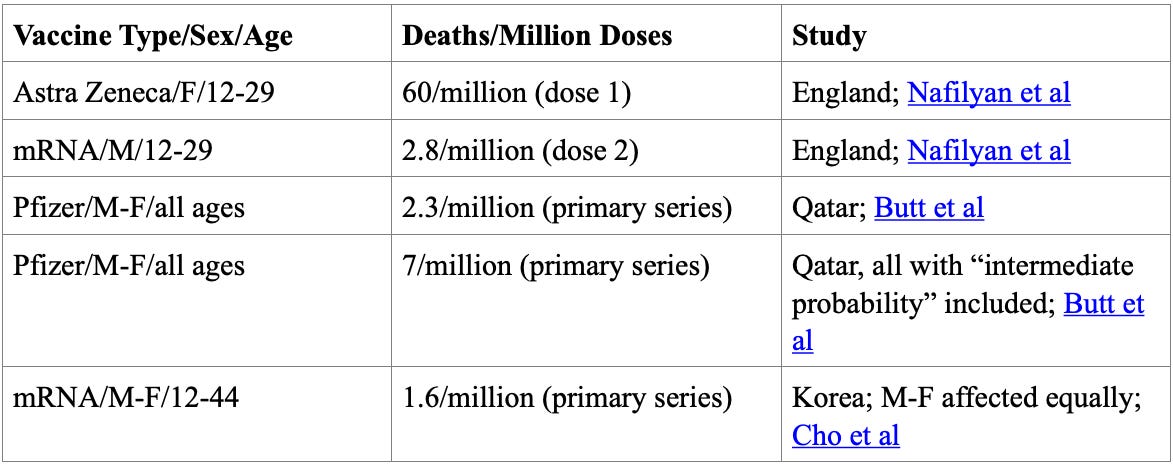
The above should be considered minimum estimates based on only the known and proven cases or on a self-controlled case series that was more likely to provide an underestimate due to healthy vaccinee bias around the time of vaccination. As the German and Korean autopsy series pointed out, a number of deaths attributed to the vaccine would have been missed had an autopsy not been performed due to sudden cardiac death shortly after vaccination.
Conclusions
I have deep sympathy for people who have lost a loved one to COVID-19 vaccination and I am dedicating this post to them. My criticism of Rancourt et al.’s analysis stems from the fact I think people are owed as accurate data as possible. In regards to my current position, I don’t think COVID-19 vaccines should continue to be used and I have made this clear publicly on multiple occasions including here. This is based on lack of evidence of efficacy and an incompletely defined risk profile.
Now I want to give quick shoutouts to Denis Rancourt and his colleagues for attempting to answer a very difficult question and inspiring this post. I am sure he will have responses to what I wrote and they are welcome. Second, I did not get into all of the parts of Bret’s interview that I loved, but I thought this tweet from Aaron Kheriaty summed up my feelings brilliantly:
Controversial claims and interpretations should lead to conversations and more data, not cancellations. Bret actually said in the interview that we need more physician scientists doing honest investigative journalism about current health issues like post-vaccination deaths and excess mortality. In that spirit, I hope this post can start a productive discussion. Please feel free to point out anything you feel I got wrong or things I should have included.
Dr. Tracy Beth Høeg is an Epidemiologist at the Department of Epidemiology and Biostatistics at the University of California, San Francisco and Associate Professor of Clinical Research at the University of Southern Denmark. This article was first published on the Illusion of Consensus Substack page. Subscribe here.
Stop Press: A debate took place last night between Denis Rancourt and Tracy Beth Høeg to look at the 17 million deaths claim. Tracy tweeted about it here.

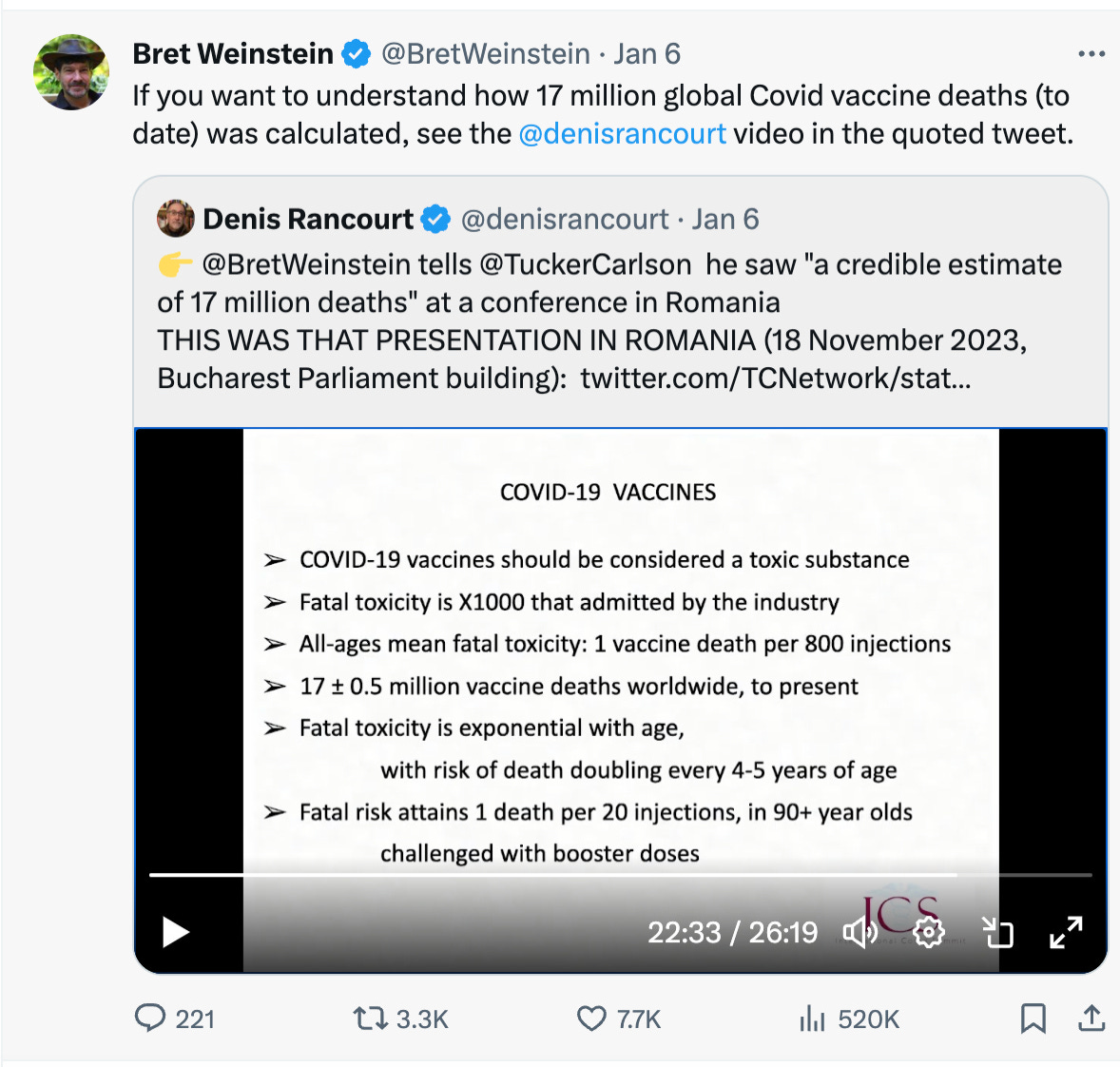
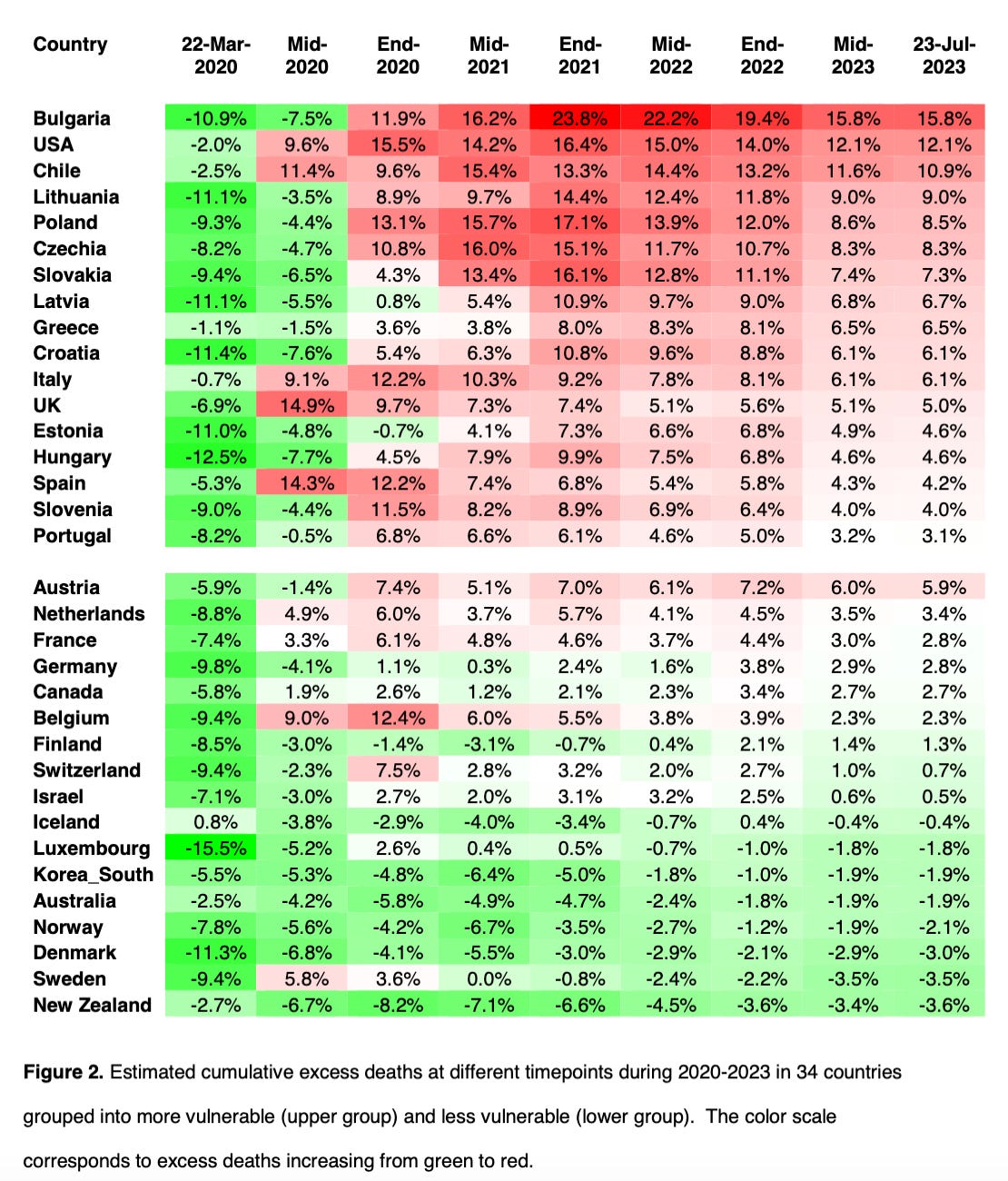
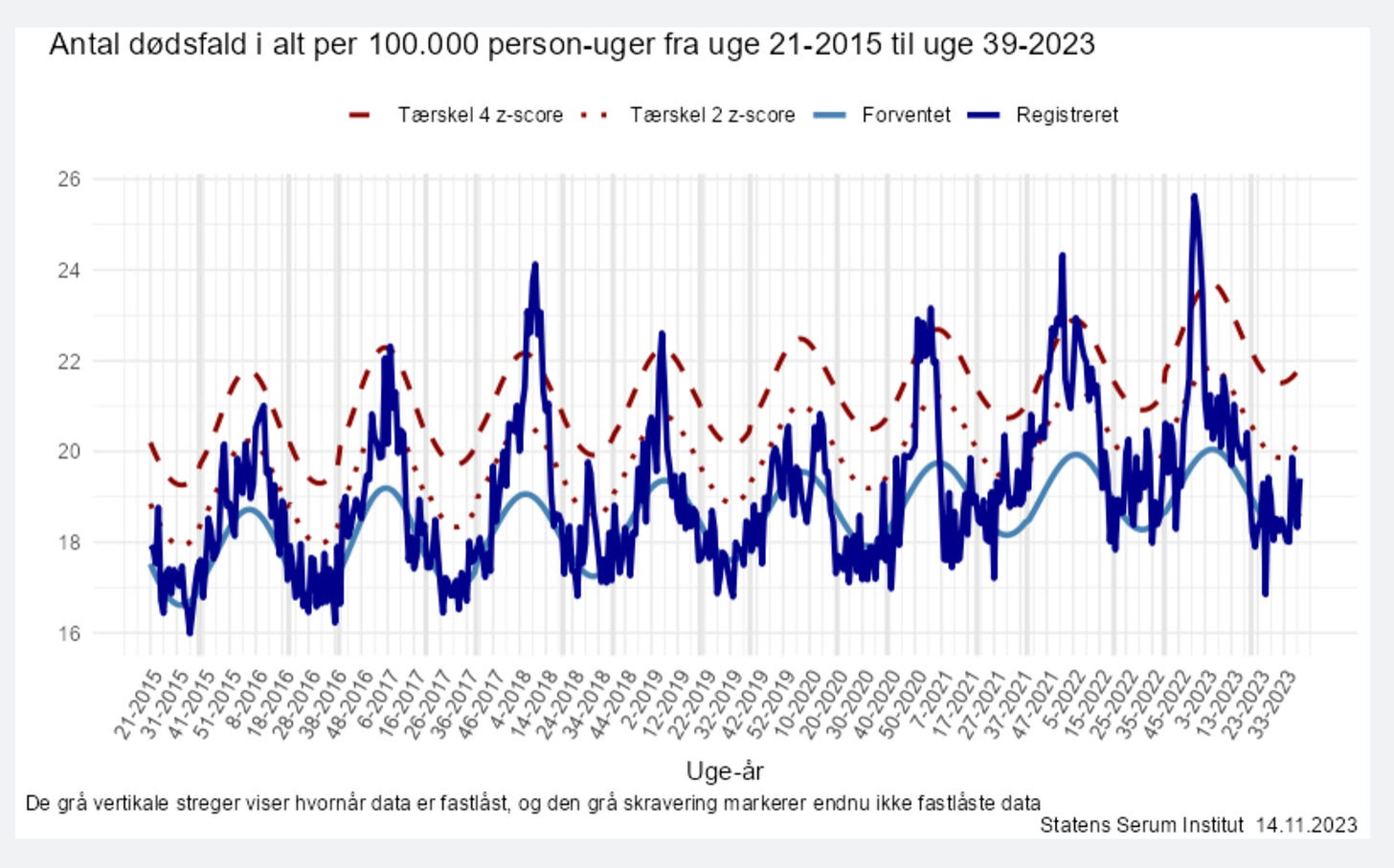
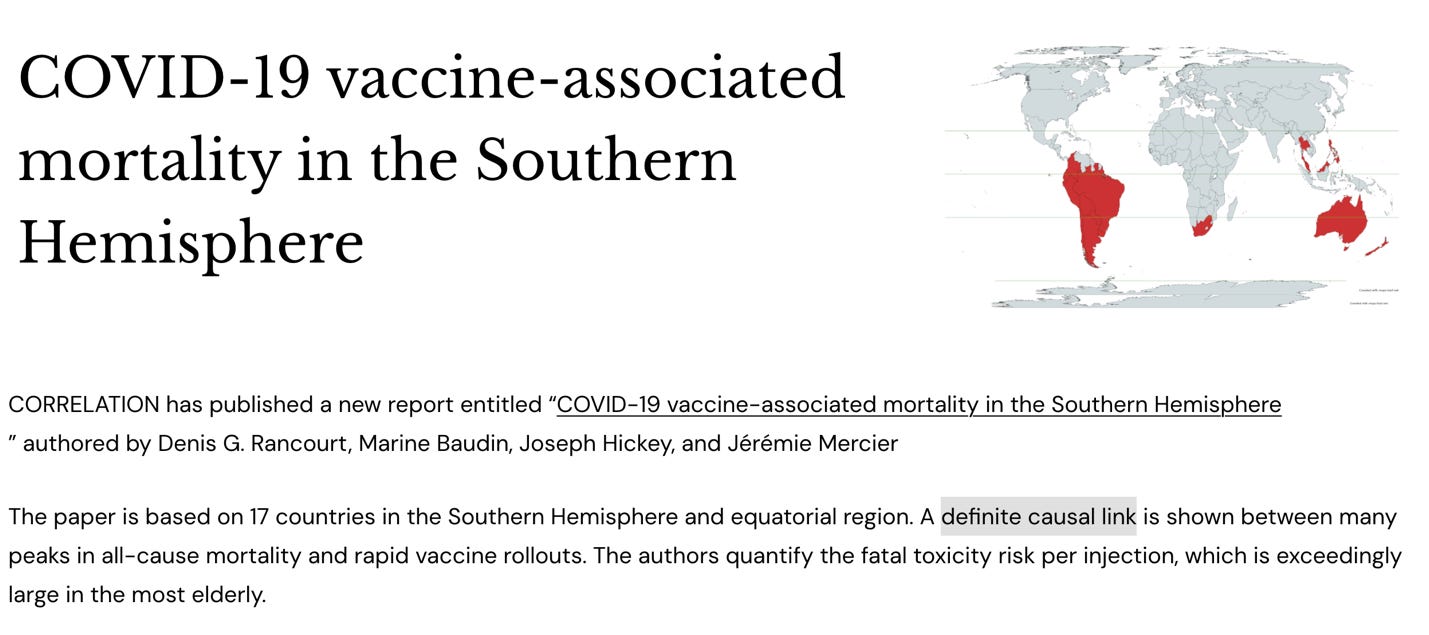

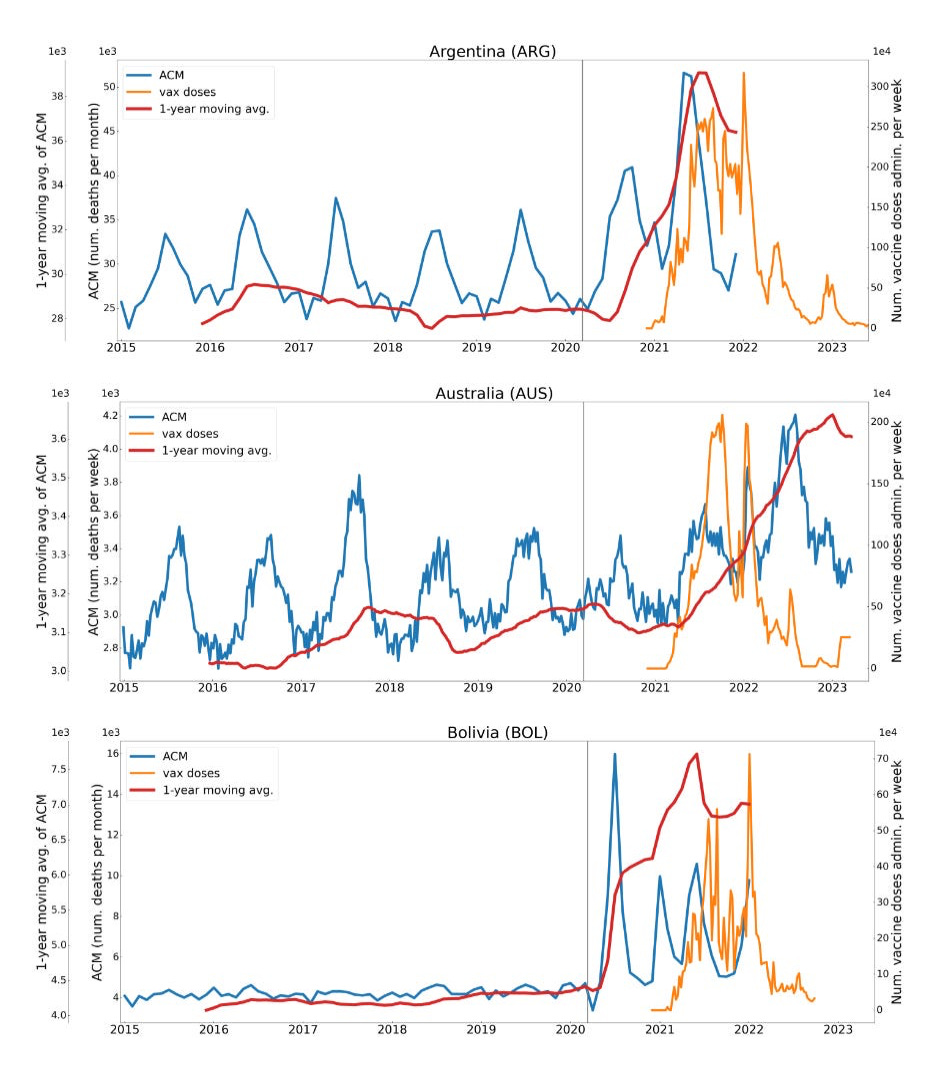
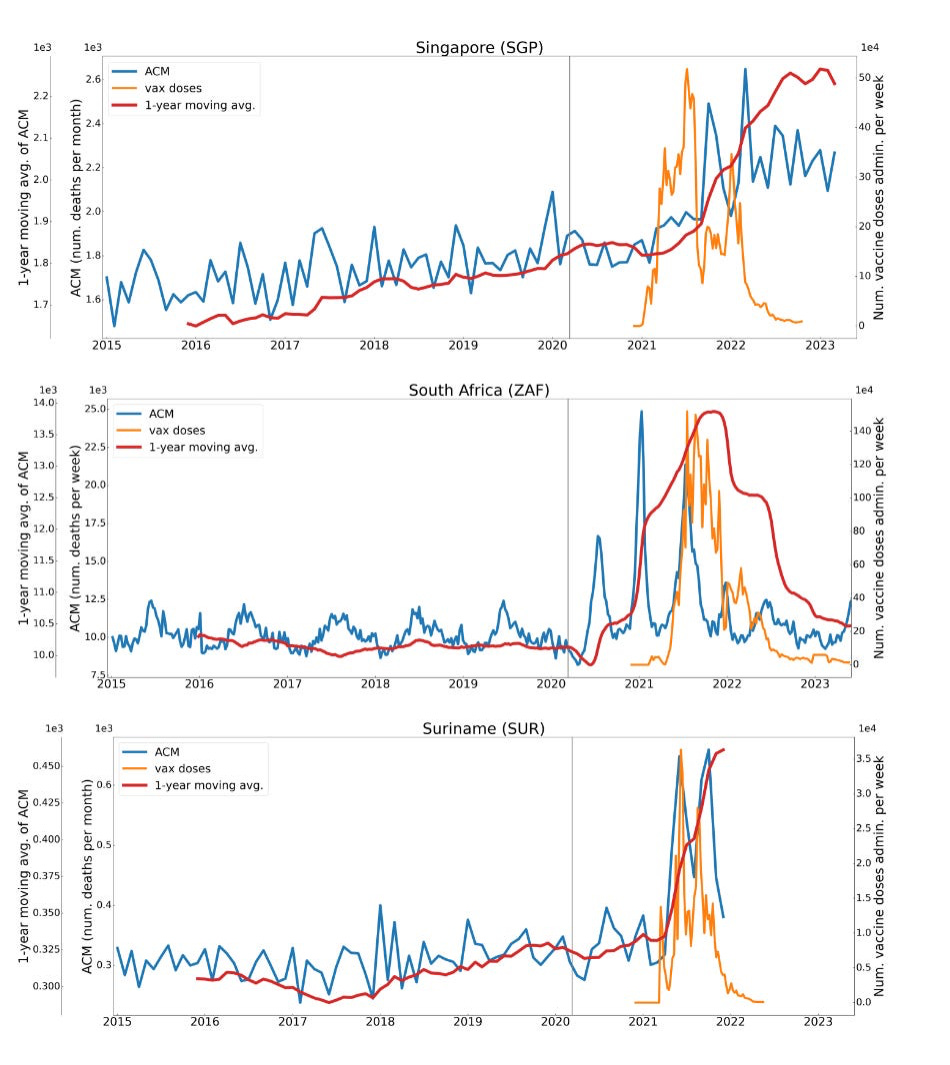
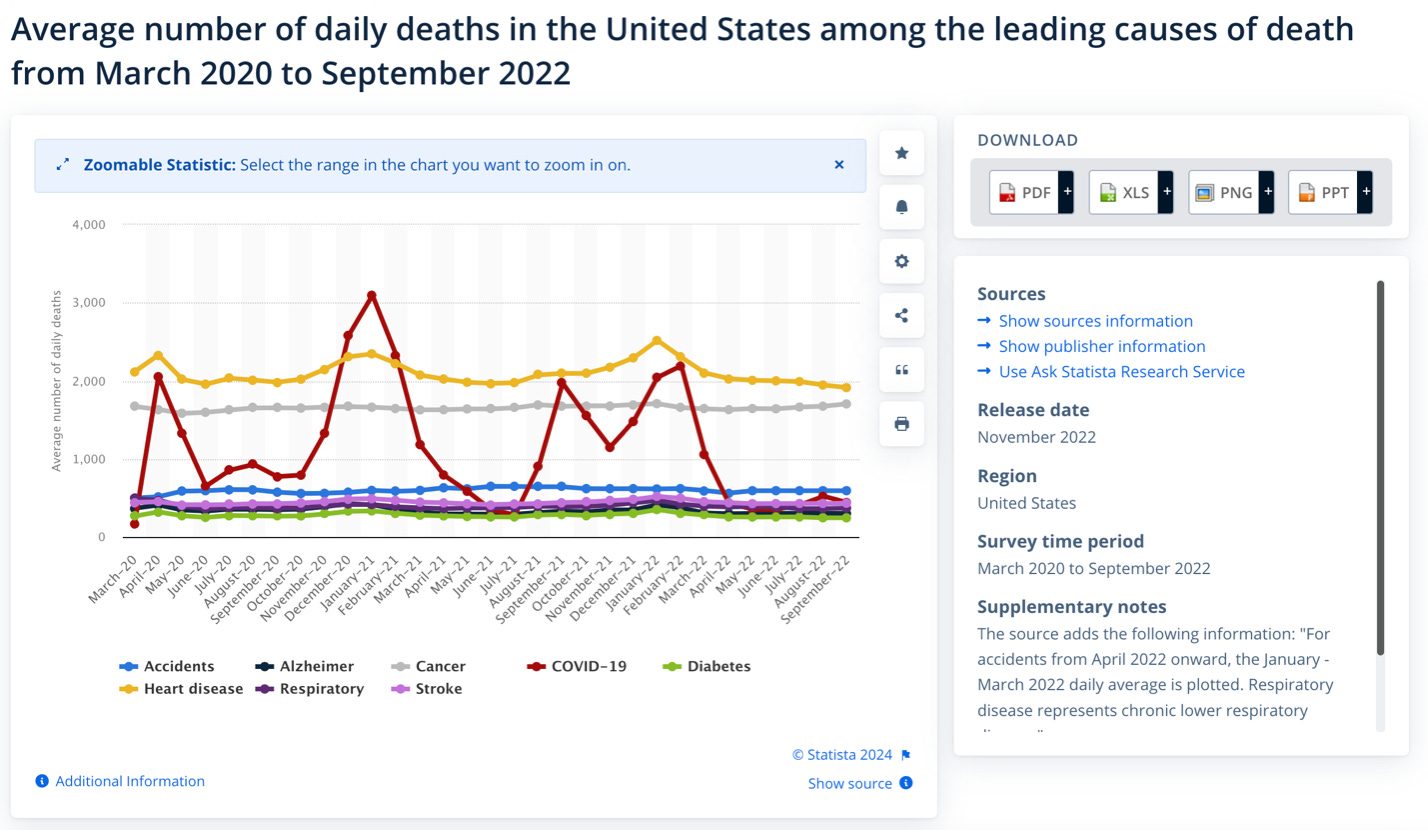
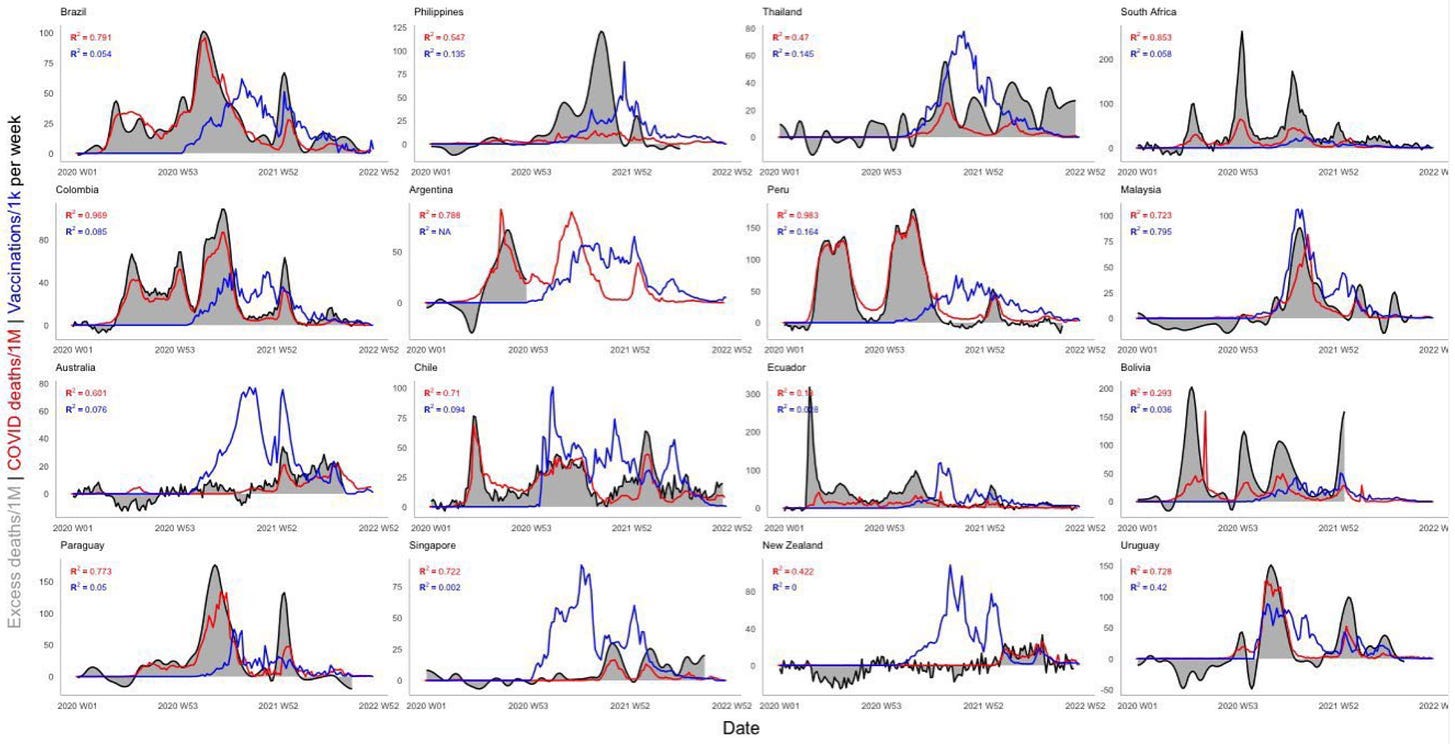
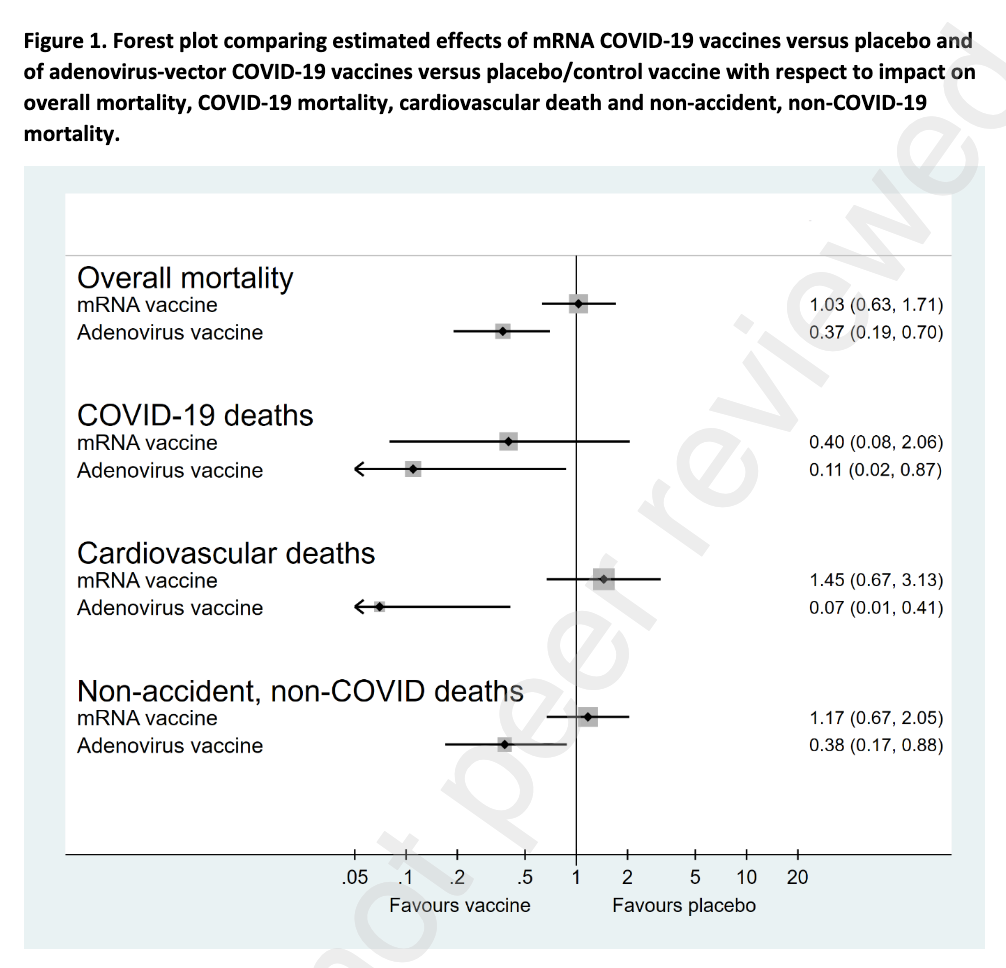













To join in with the discussion please make a donation to The Daily Sceptic.
Profanity and abuse will be removed and may lead to a permanent ban.